Zephyr
Zephyr
Efficiency & Scalability
The Green Towers are a new family of efficient, scalable and low-impact wind turbines that work thanks to a patented principle never used before. They exploit a double thermodynamic principle compared to the current wind turbines on the market, in particular:
First model (GT1)
It uses helical flanges arranged tangentially to a cylinder to capture horizontal wind currents coming from any direction. The opening at the base allows the air to pass naturally from a higher pressure to a lower pressure by flowing inside the cylinder to reach the upper opening. During this phase, the updraft is ‘amplified’ thanks to the black-coloured base, which is heated by solar radiation and contributes significantly to creating a high pressure zone at the base of the tower. The upward current is converted into circular motion, thanks to helixes inside the cylinder. By exploiting this dual principle, production efficiency is significantly increased and the blade begins to rotate for lower wind start-up speeds than blades on the market.
Second model (GT2)
This model is designed to be integrated into structures with large differences in height. In addition to having a helix at the top that utilises the horizontal currents coming from different directions, the blade structure consists of a duct in which there are propellers that convert the updraft from the base of the construction into electrical energy. In this case, a Darrieus vertical-axis blade would be used as the main rotational ‘motor’, but with the use of a fixed structure inside the construction for the updraft, in which quadripiles are positioned at different heights and 15° out of phase with each other. These are coupled to the central axis by means of which rotation is transmitted to the gearbox and the motor for electricity generation.
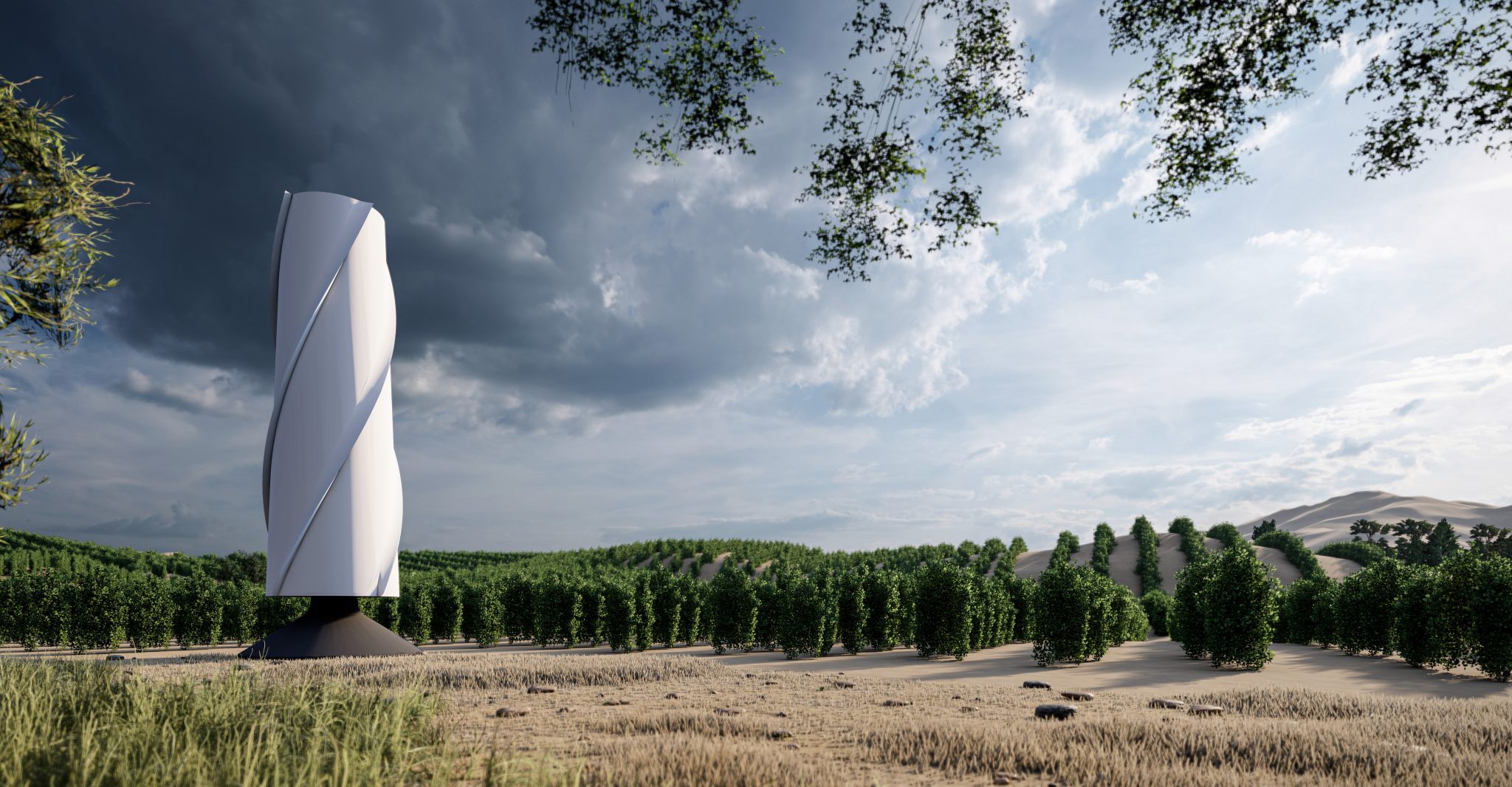
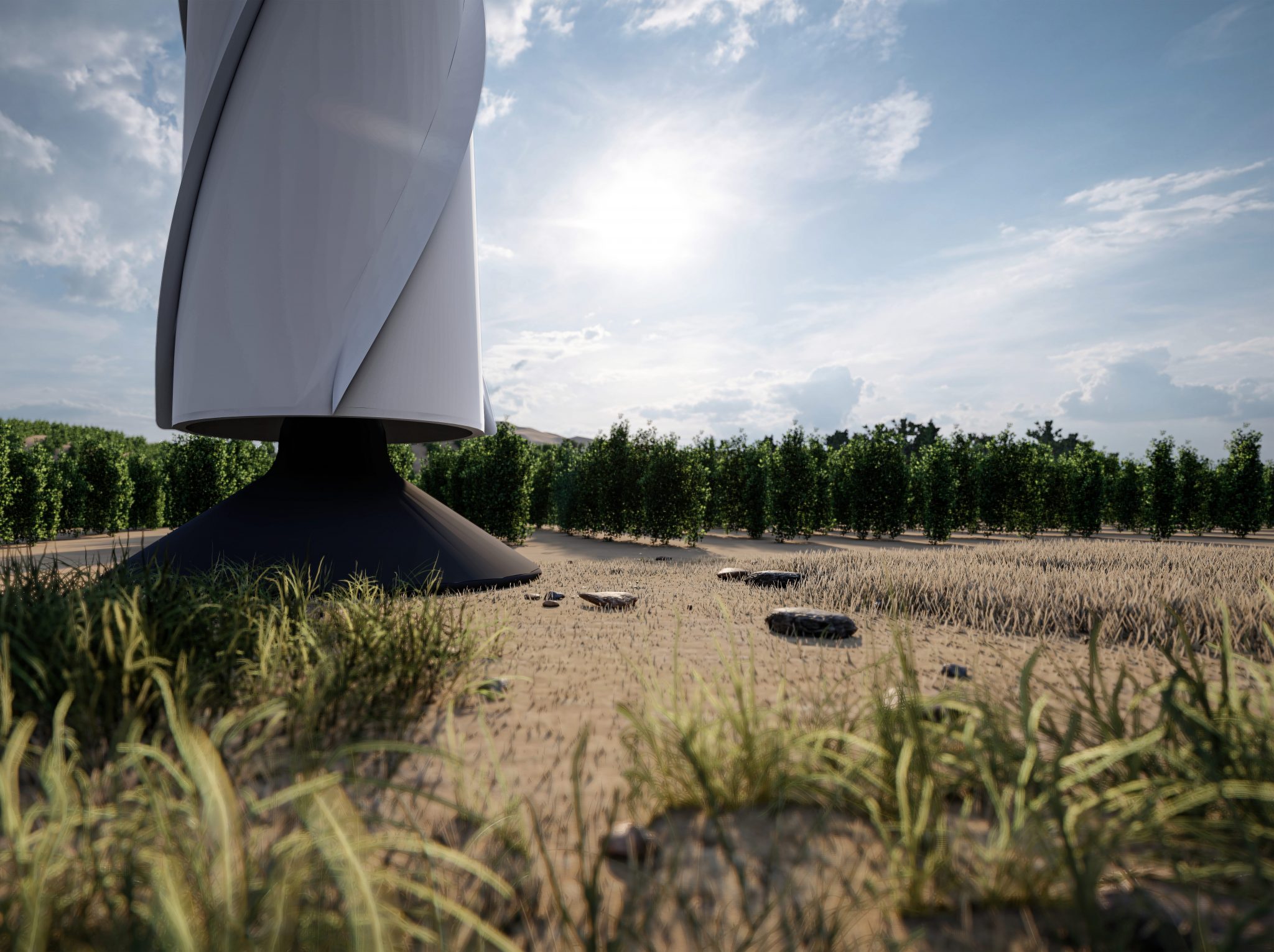
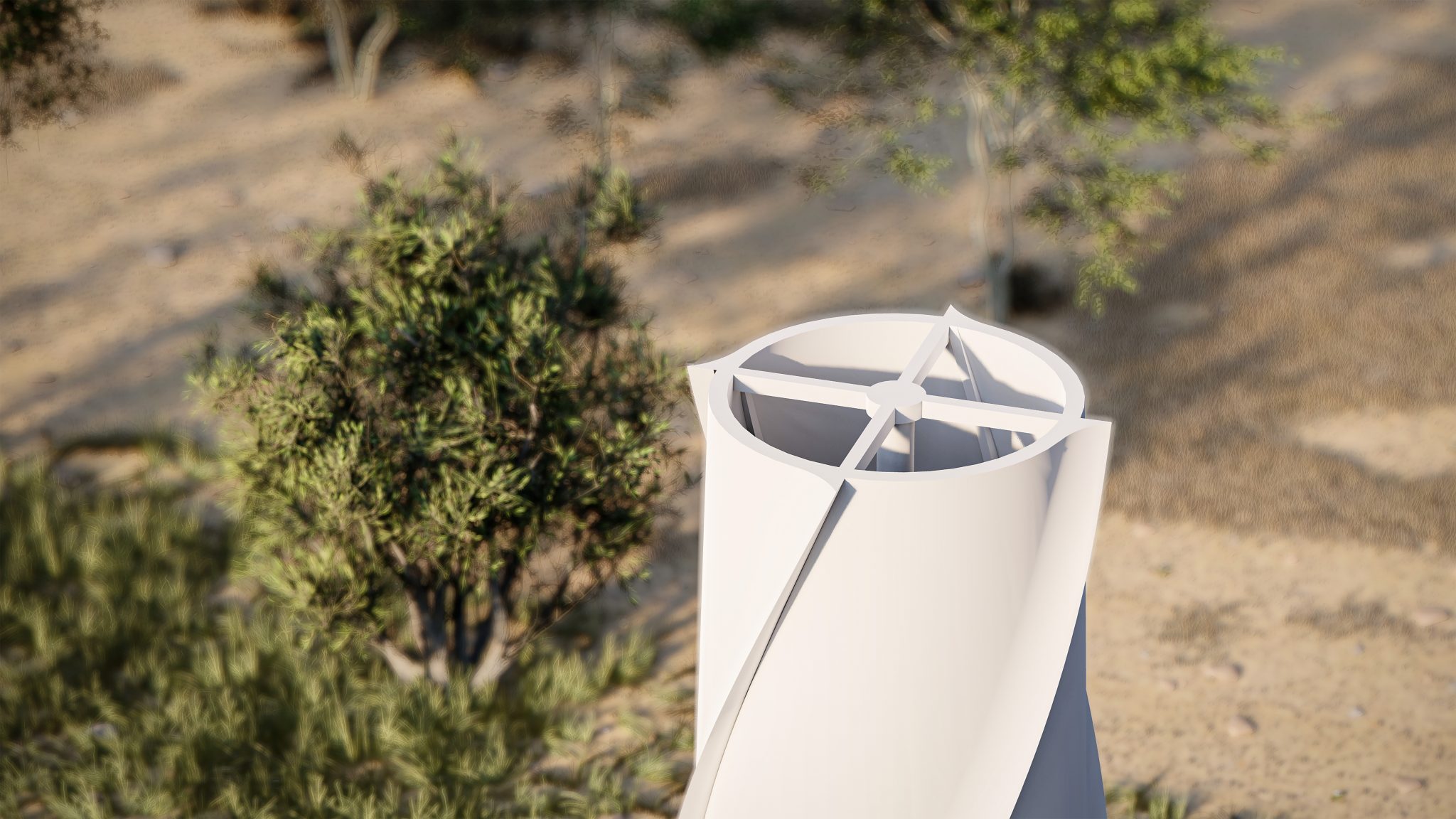
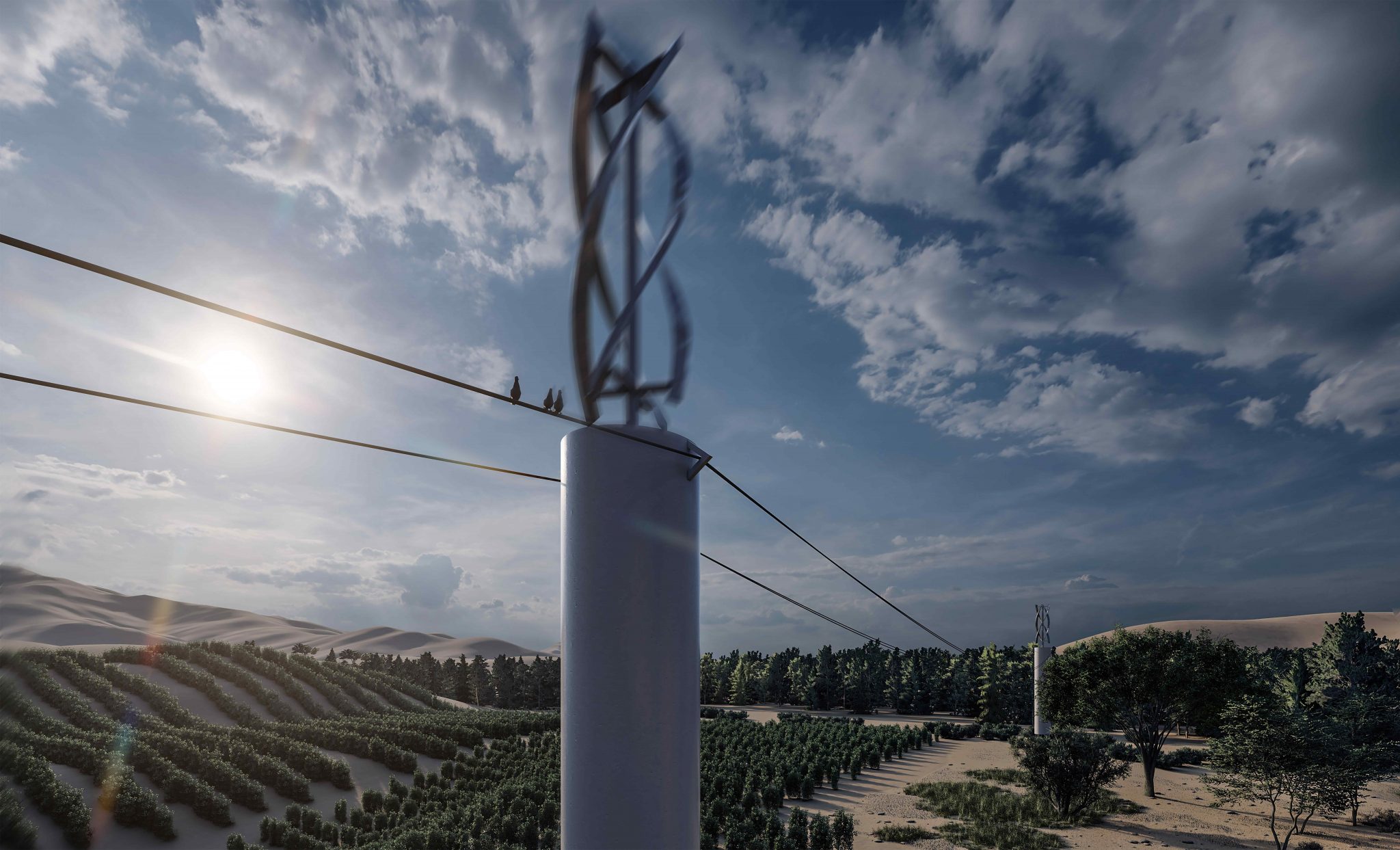
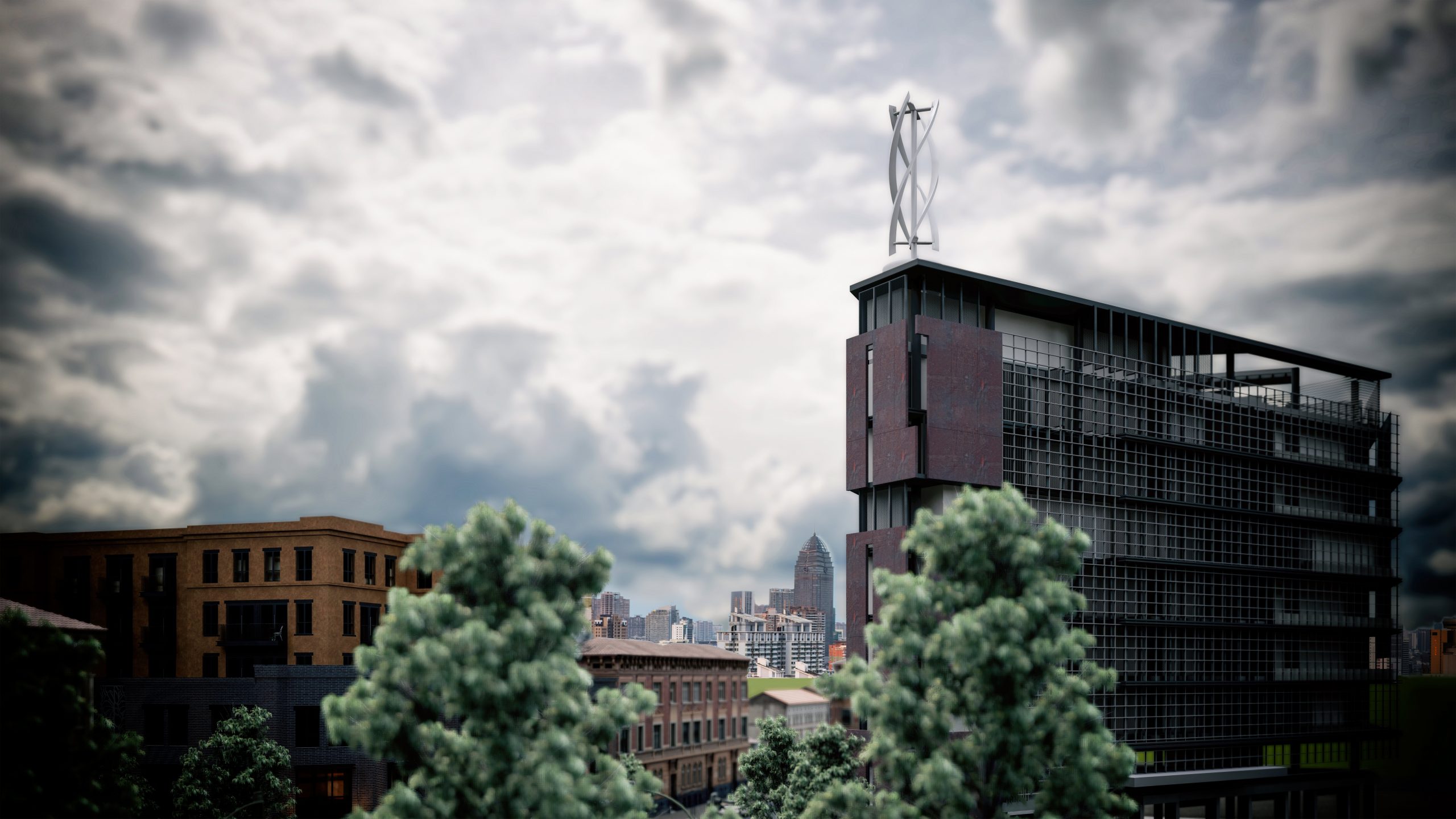
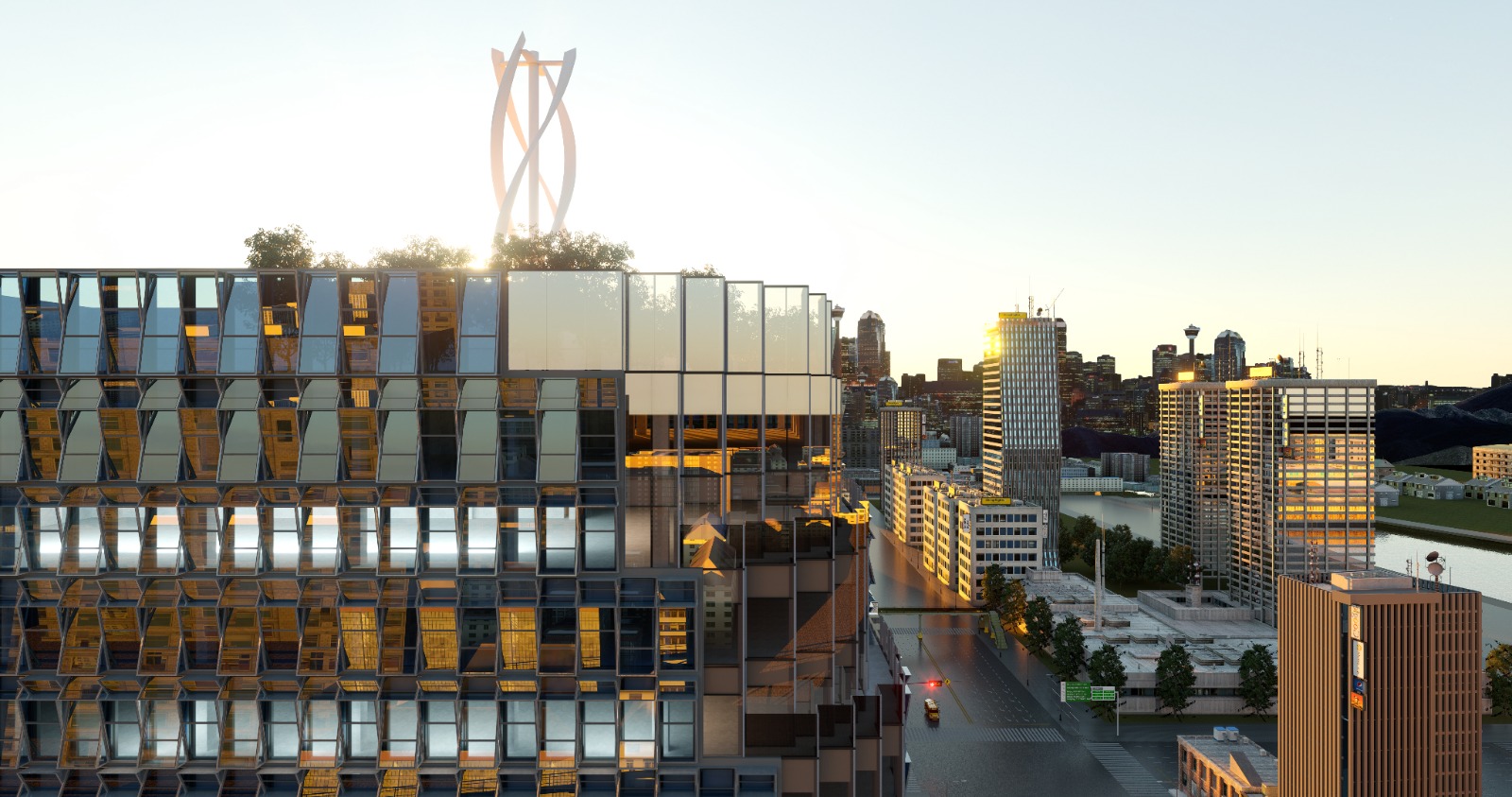
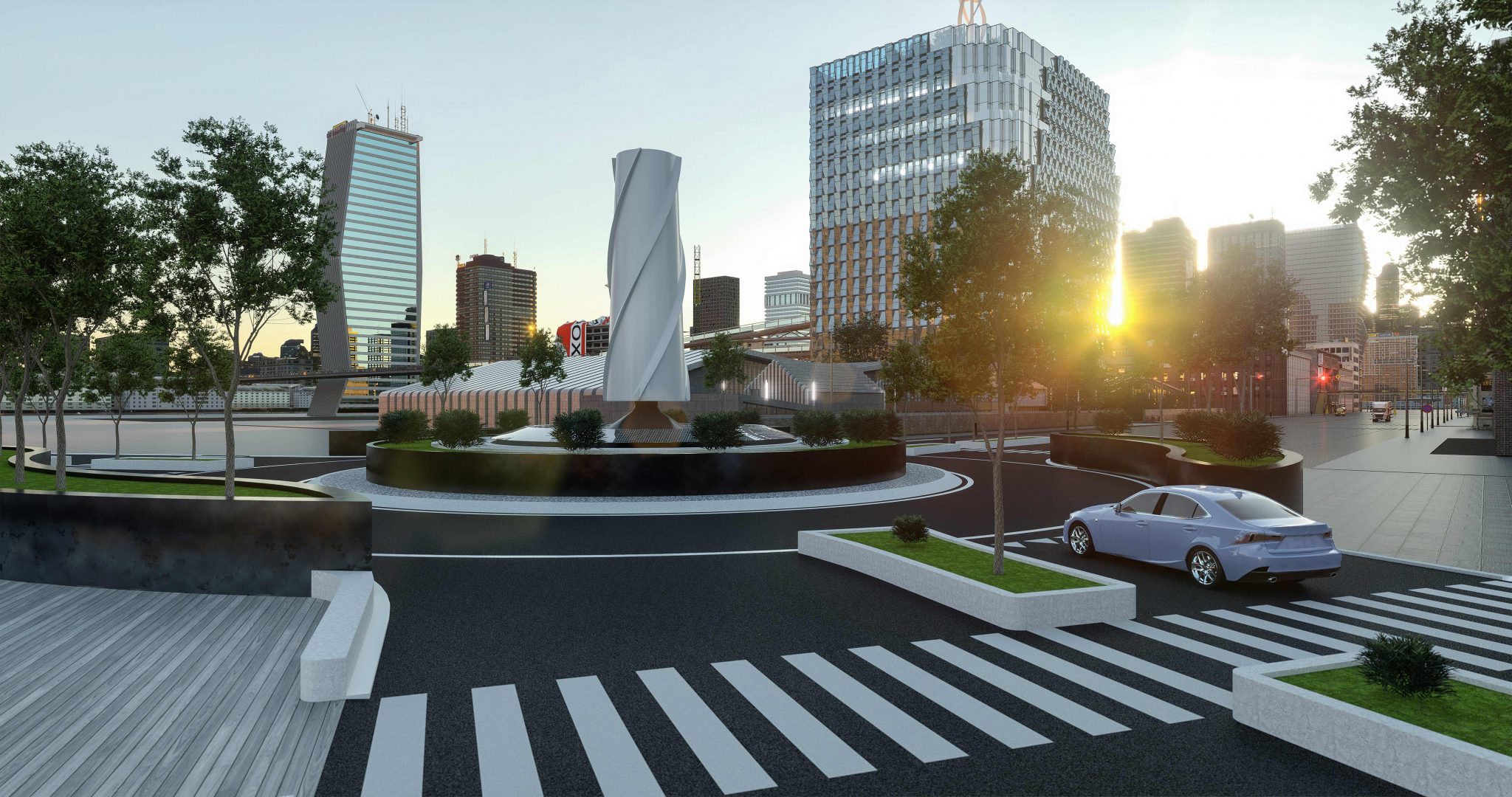
What Improves?
Some of the most common problems for the lack of diffusion of wind turbines on a large scale are: startup speed (high wind speed to start the rotation), aesthetic impact (difficult integration in naturalistic areas) and danger of moving parts (rotation of the blades becomes a danger to animals and humans). Furthermore, its rotation sometimes causes a constant noise that gets worse over time and maintenance is dangerous and expensive due to the high-altitude positioning of the engine, the mechanics and the control unit.
All these problems have been solved by developing a device that exploits three physical principles to generate a rotation:
1. the horizontal pressure difference of the wind
2. the vertical pressure difference of an air column of height H
3. the upward movement of the hot air
Panted system 100% Made in Italy
The models can cover a production range from 1Kw to 1Mw
Absence of rotating blades
Double thermodynamic principle
Transmission optimization
Models from 2 to 200 meters